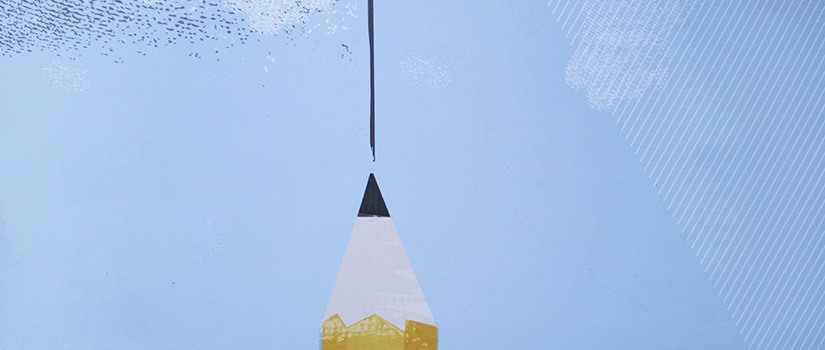It is one of the thinnest membranes ever made — and it's also a highly selective gas filter. Made of graphene oxide, the membrane constructed by a team of engineers at USC is a little more than two carbon atoms thick and can readily separate hydrogen from carbon dioxide molecules.
"The membrane behaves like a sieve," said Miao Yu, a chemical engineer in the College of Engineering and Computing. "Bigger molecules cannot go through, but smaller molecules can."
The researchers, led by Yu, reported in the journal Science that the membrane's selectivity is based on molecular size. Hydrogen and helium pass through it with relative ease, but carbon dioxide, oxygen, nitrogen, carbon monoxide and methane move much more slowly.
Having membranes so thin is a big advantage in separation technology. It represents a completely new type of membrane in the separation sciences. — Miao Yu
The membrane was constructed on the surface of a porous aluminum oxide support. Flakes of graphene oxide, with widths on the order of 500 nanometers but just one carbon atom thick, were deposited on the support to create a circular membrane.
It's something of an overlapping mosaic of graphene oxide flakes, like the surface of a table covered with playing cards. In the past, that kind of membrane has typically been "leaky." Gas molecules are looking for holes anywhere they can be found, and in a membrane made up of graphene oxide flakes, there would be two likely places: holes within the flakes, or holes between the flakes.
It's the spaces between flakes that have, in the past, been a real obstacle to progress in the science of separating of light gas molecules. That's why microporous membranes designed to discriminate between objects on the molecular scale have typically been very thick.
"At least 20 nm, and usually thicker," Yu says. Anything thinner and the gas molecules would readily find their way through spaces between flakes. In earlier membranes, the flakes were distributed in such a hodge-podge manner that laying down many layers was the only way to fill the gaps.
Yu's team devised a method of preparing a much more uniform mosaic of flakes atop the membrane support. That way, those "inter-flake" leaks were prevented. Gas molecules were only able to pass through holes in the graphene oxide flakes themselves.
The width of the full membrane is readily measured with a ruler: about two-and-a-half centimeters in diameter, or nearly an inch. Its breadth, however, is on another scale altogether. Their thinnest membrane was only 1.8 nm thick, the thickness of just a few sheets of graphene oxide.
To put that number into perspective, a typical sheet of printer paper is about 100,000 nm thick. A relative thickness comparison of the membrane to a sheet of paper would be akin to the height of a quarter-of-an-inch-thick welcome mat laid in front of the Empire State Building.
The membrane has a range of potential applications. Carbon dioxide, a major greenhouse gas, could be efficiently separated from other gases. Hydrogen could be readily purified from gas mixtures, which is necessary in a variety of highly efficient energy systems, such as fuel cells.
Another possibility is water purification, because the holes in the molecular sieve are on the order of the size of water molecules. Yu thinks the membrane might be well suited for purifying the copious amounts of tainted water produced by hydraulic fracturing (fracking).
Being able to reduce membrane thickness — and by an order of magnitude — is a big step forward. "Having membranes so thin is a big advantage in separation technology," Yu says. "It represents a completely new type of membrane in the separation sciences."
